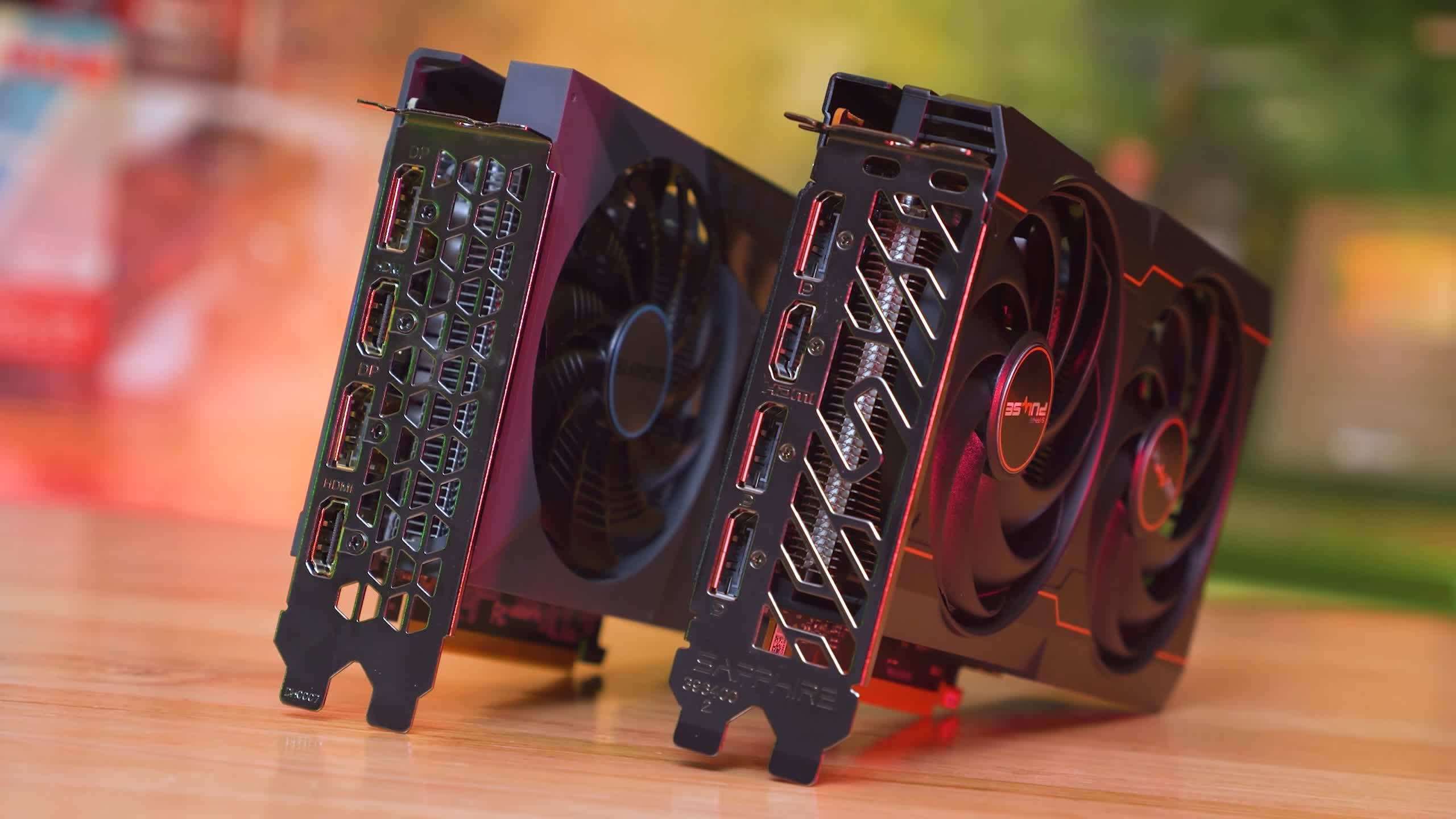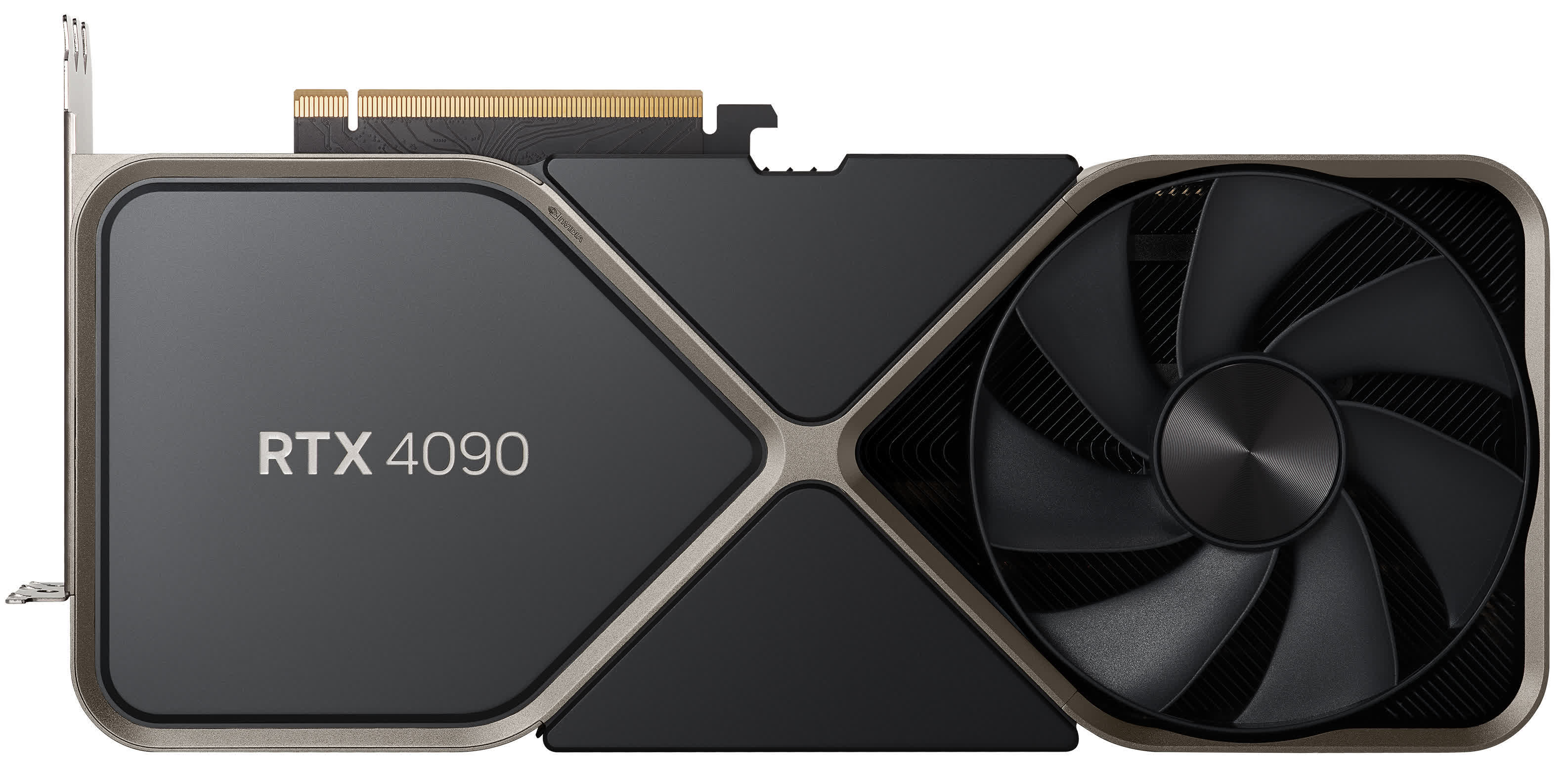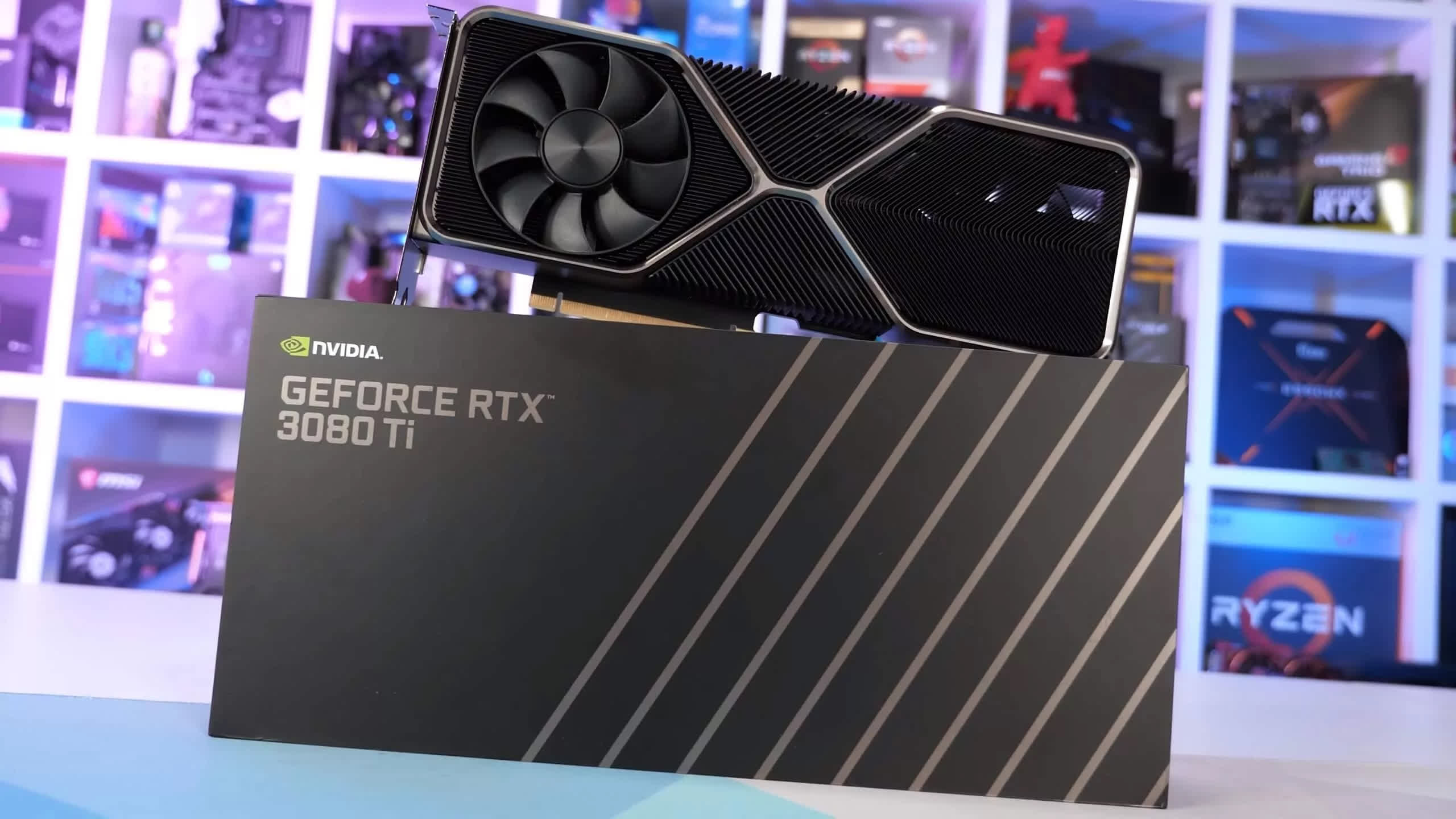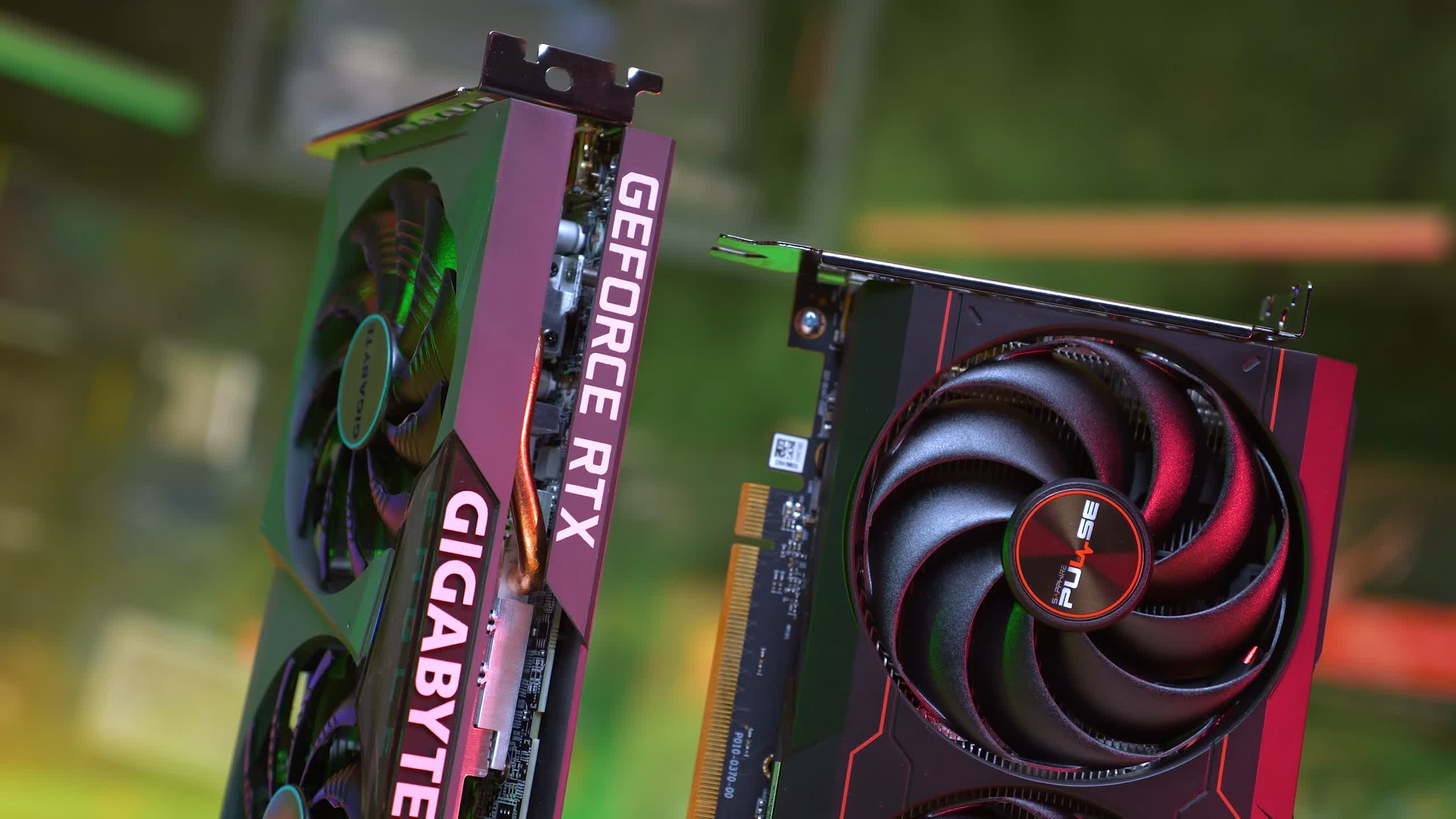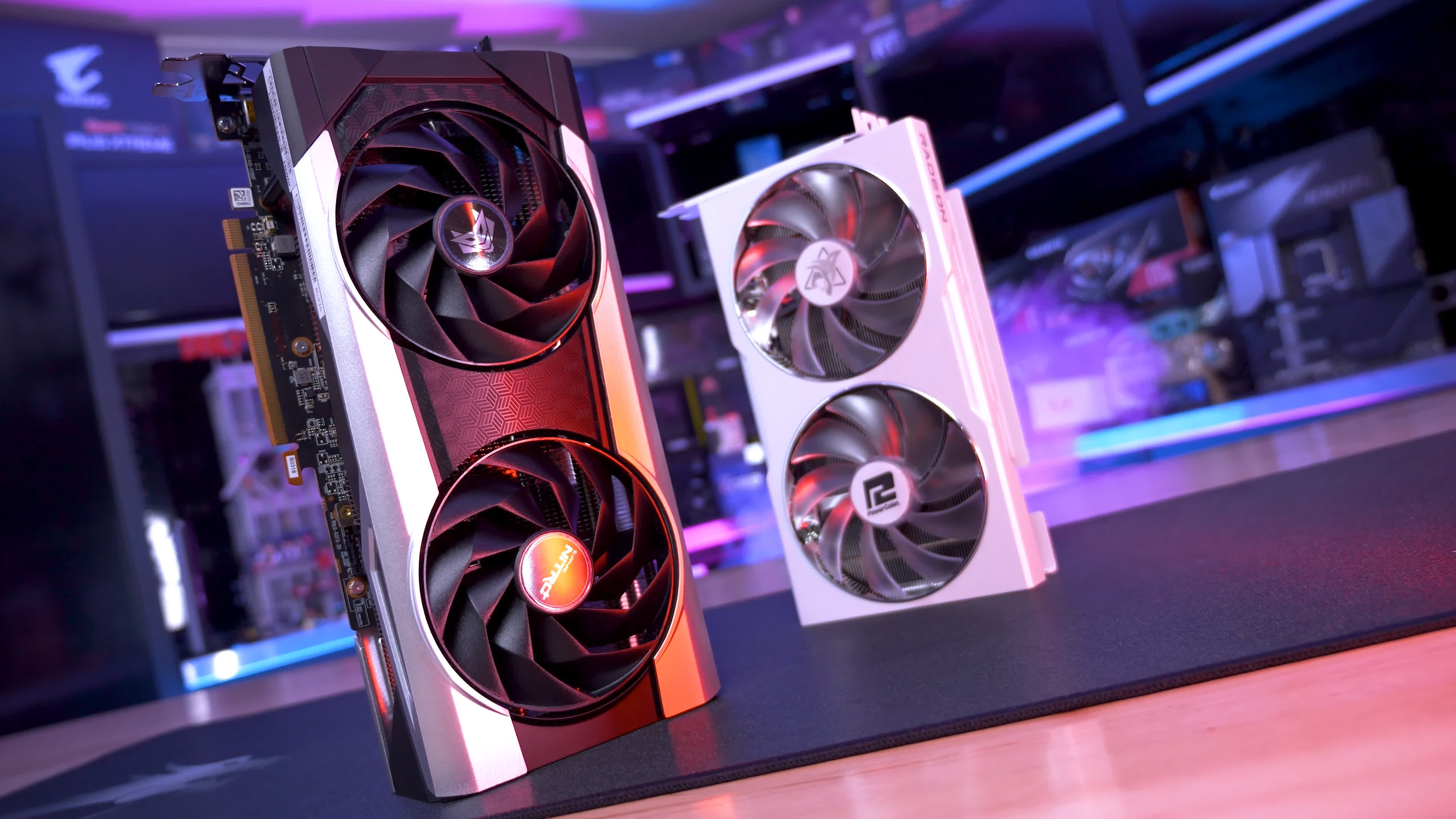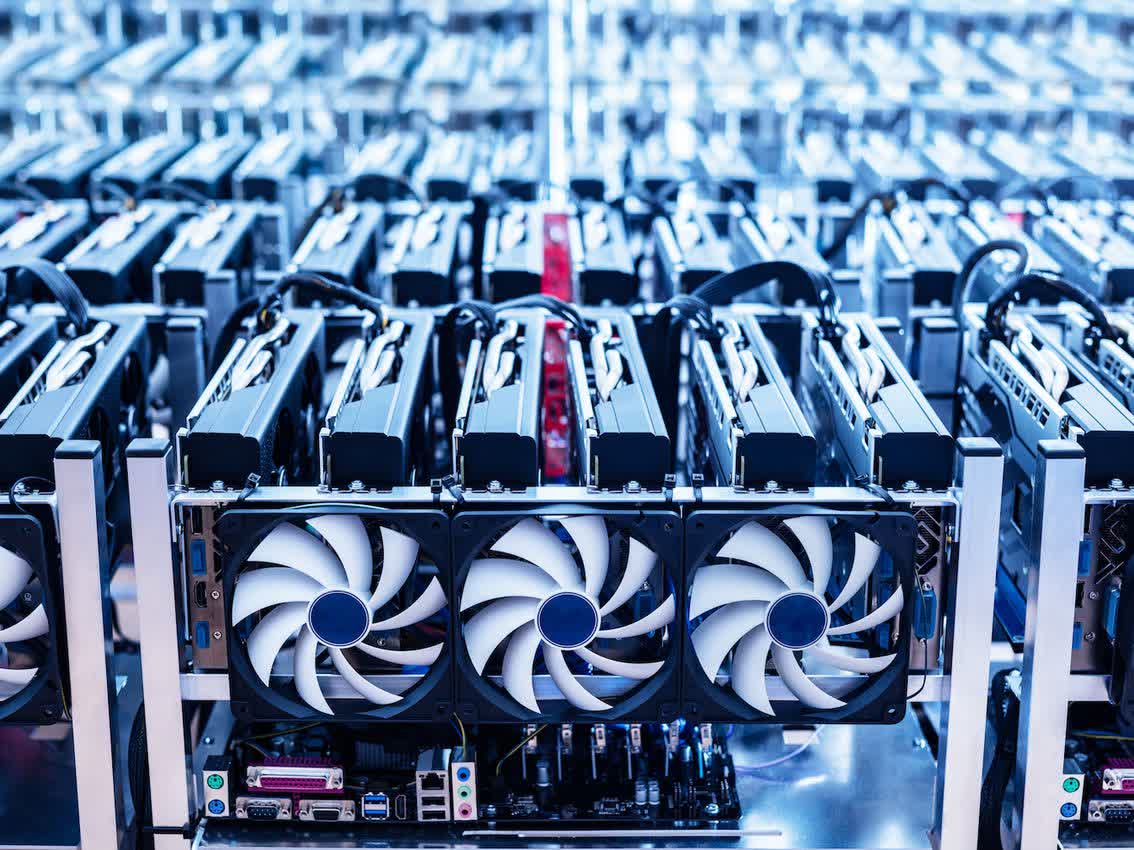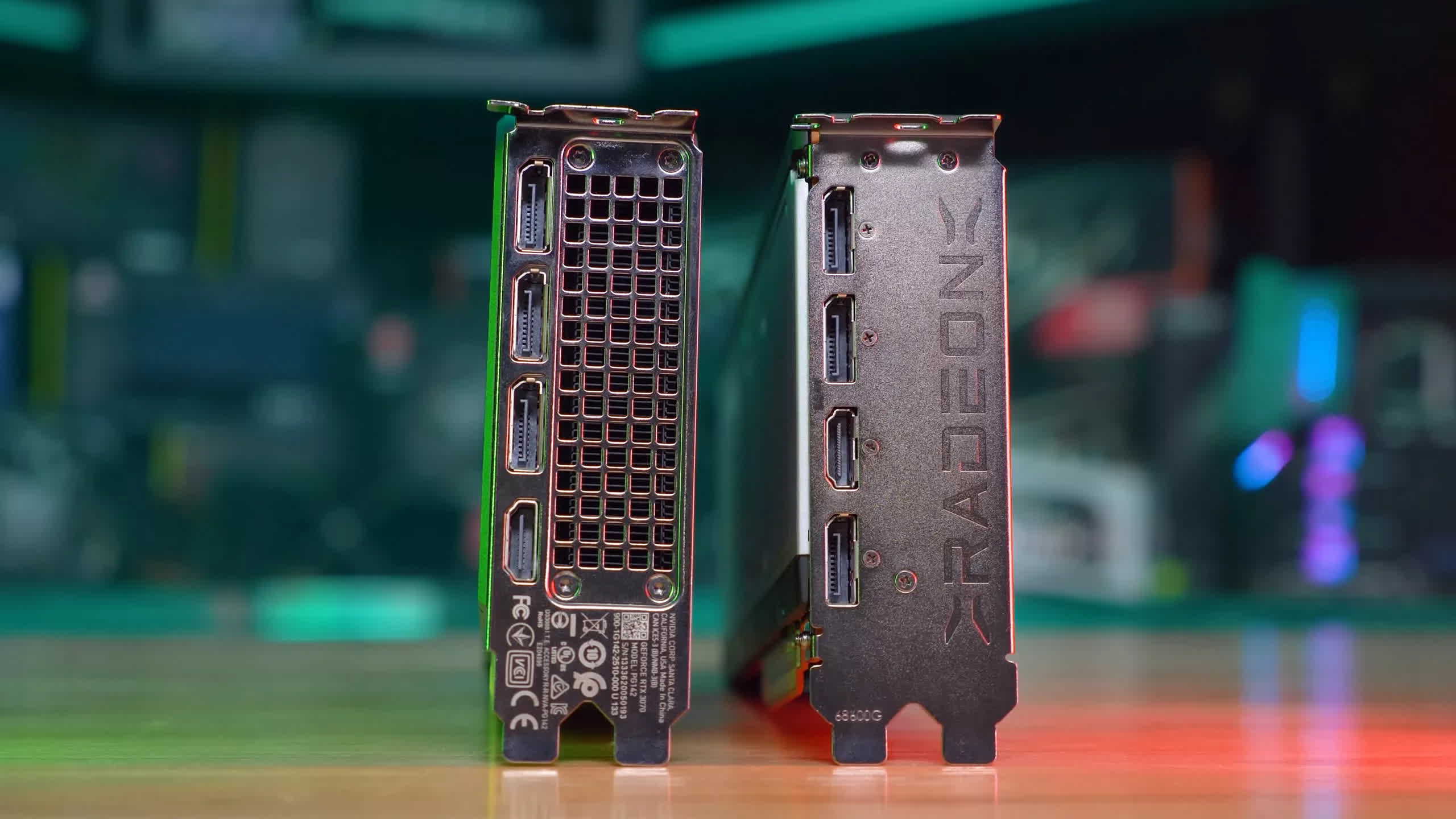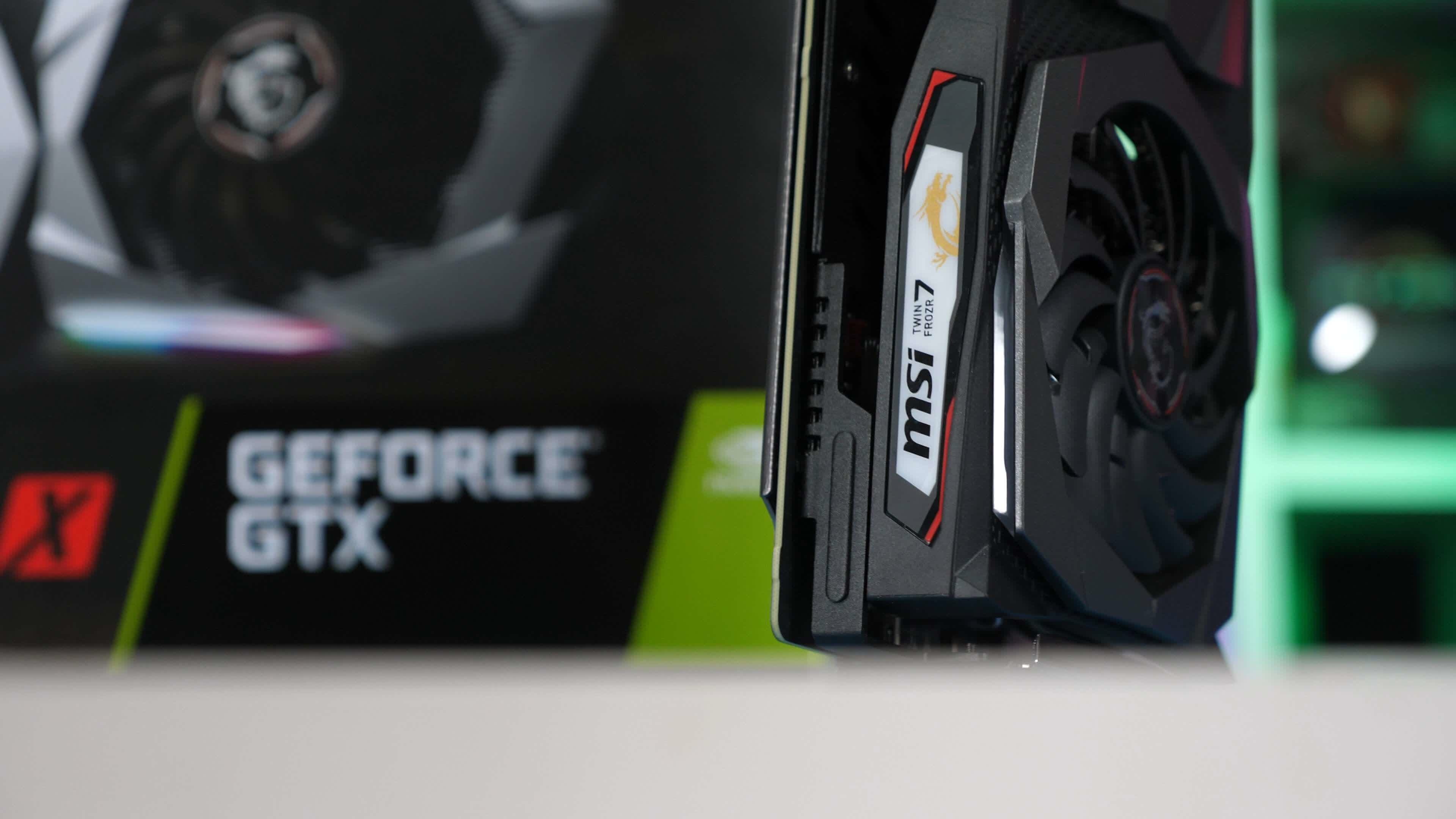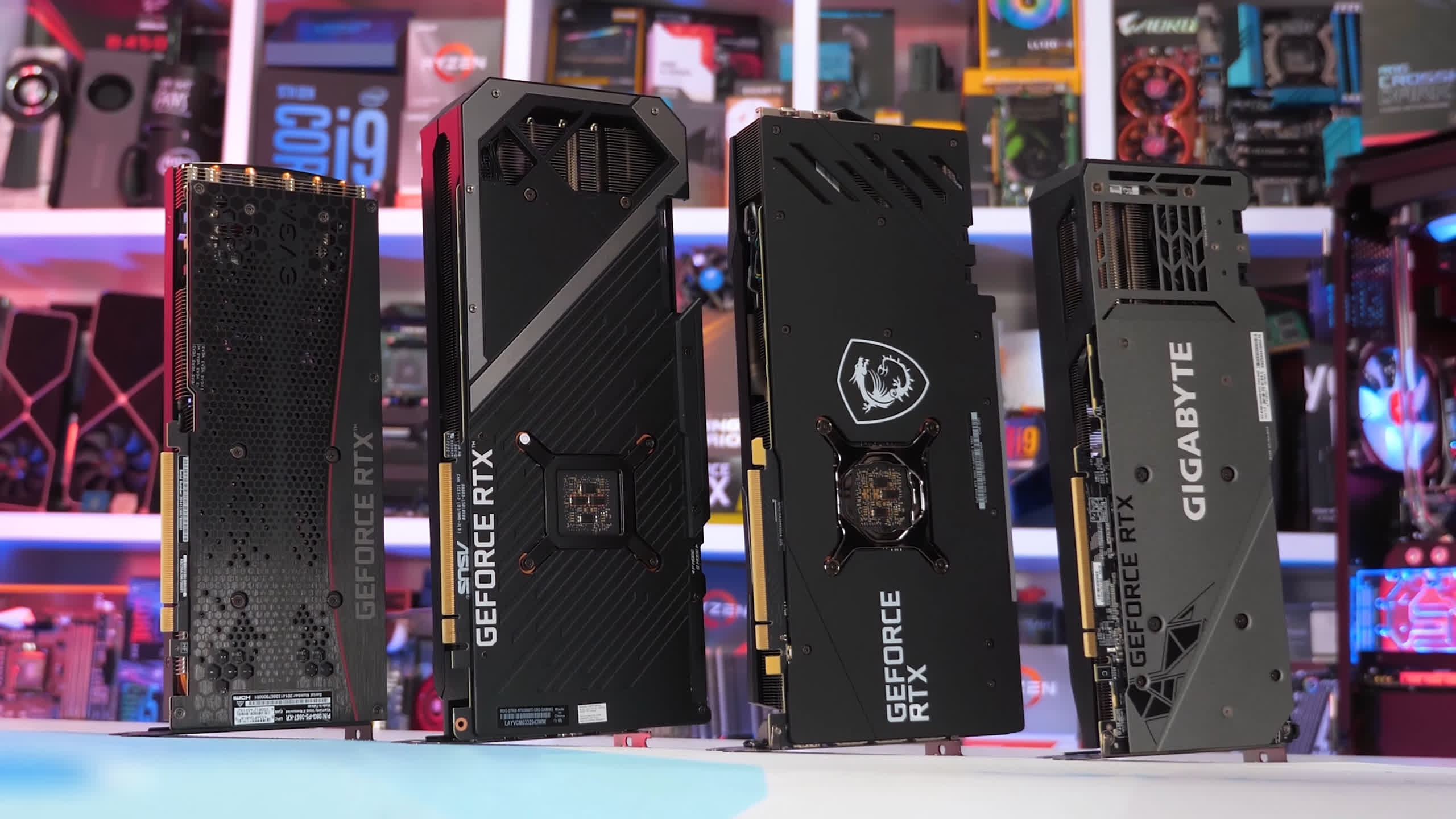Let's talk GPU prices and this month's update is very interesting because of two key factors: the first, Nvidia just launched new GeForce 40 series graphics cards; and second, GPU mining is now dead. We're expecting price movement to continue throughout the fourth quarter and it all starts with these two developments which have major implications for the GPU market.
But have these factors had any impact in the market yet? Let's find out.
Updated: See our latest GPU Pricing Update here.
Nvidia's new GPUs and graphics cards (check this out for a full breakdown) are going to be expensive. The GeForce RTX 4090 will be $1,600 coming on October 12, followed by the RTX 4080 16GB at $1,200 and RTX 4080 12GB at $900, both expected in November. These are premium priced products that in the current market would be two of the three most expensive GPUs you can buy.
In our RTX 40 launch analysis we talked about how these new cards appear to give an improvement in price to performance ratio when compared to the RTX 30 series MSRPs. For example, the RTX 4090 should be substantially faster than the RTX 3090 while only costing $100 more.
However, when we look at the current market, where the RTX 3090 is selling for below $1,000 - I don't think the MSRP for a two-year-old product is all that relevant right now. It's also true some of the price drops have come in anticipation of newer generation GPUs.
"Moore's Law is dead. (...) A 12-inch wafer is a lot more expensive today. The idea that the chip is going to go down in price is a story of the past" Nvidia CEO Jensen Huang in a recent RTX 40 series launch Q&A
What Nvidia appears to have done is pricing the RTX 40 series at roughly the same price-to--performance level as current products. Right now we have the RTX 3090 Ti at around $1,000, RTX 3090 slightly below that, RTX 3080 Ti around $800, and the RTX 3080 series around the $750 mark.
Based on the performance numbers Nvidia showed, the RTX 40 series should slot right into that current pricing structure, though of course we'll have to wait for independent reviews to figure out exactly where they land.
This presents a unique situation for current-gen graphics cards. If the RTX 40 series isn't providing a substantial increase in price to performance ratio, there is less incentive for older GPU prices to fall.
Is this a deliberate strategy from Nvidia to limit losses from the high volume of RTX 30 series inventory left to be sold? By keeping the RTX 30 series somewhat attractive to buyers that could be the case, though at the cost of weakening the hype and demand for the new series. It's a fine line to tread and we'll only find out if they're successful in the weeks after launch.
Nvidia GPU Pricing
The question moving forward will be how much impact the announcement of RTX 40 series GPUs will have on graphics card pricing. Based on current data (using Newegg list pricing as usual), the launch has caused flagship GPU pricing to drop in the days leading up to the announcement.
Last month the RTX 3090 and 3090 Ti were selling for over $1,200, but now those cards are down to ~$1,000, falling in price by over 20 percent. When we look at the price trend for Nvidia GPUs since March 2022, that's one of the largest drops we've seen so far.
| MSRP | Lowest Price July | Lowest Price August | Lowest Price September | Current Price Inflation | Price Increase Aug to Sept | |
|---|---|---|---|---|---|---|
| GeForce RTX 3090 Ti | $2,000 | $1,470 | $1,350 | $1,030 | -49% | -24% |
| GeForce RTX 3090 | $1,500 | $1,270 | $1,220 | $960 | -36% | -21% |
| GeForce RTX 3080 Ti | $1,200 | $930 | $870 | $800 | -33% | -8% |
| GeForce RTX 3080 12GB | n/a | $740 | $750 | $750 | n/a | 0% |
| GeForce RTX 3080 10GB | $700 | $820 | $730 | $740 | 6% | 1% |
| GeForce RTX 3070 Ti | $600 | $670 | $620 | $610 | 2% | -2% |
| GeForce RTX 3070 | $500 | $530 | $520 | $500 | 0% | -4% |
| GeForce RTX 3060 Ti | $400 | $470 | $450 | $420 | 5% | -7% |
| GeForce RTX 3060 | $330 | $410 | $380 | $370 | 12% | -3% |
| GeForce RTX 3050 | $250 | $330 | $310 | $275 | 10% | -11% |
| Average | -9% | -8% |
The RTX 3080 Ti has fallen by 8 percent as well, the RTX 3080 series is flat, and the only other notable price declines were for the RTX 3060 Ti and RTX 3050, though both still sit above their supposed MSRP. There hasn't been much movement elsewhere across the rest of Nvidia's line-up. In fact, for cards priced below $800 – noting Nvidia didn't announce any Ada Lovelace products at or below that price – the changes have been minor.
If we look at the longer term pricing trend for cards below $1,000, it's been relatively flat or slightly declining in the last three months for cards in the RTX 3070 tier and below. This likely responds to the prospects that Nvidia wouldn't be releasing new mainstream level GPUs – if there are no new products to reset price expectations, prices will probably remain flat.
Even though there's still a lot of inventory left to be sold, we think the announcement of the RTX 40 series is unlikely to cause a huge price crash in the new GPU market beyond what has already occurred, particularly in the mid-range and lower. Prices may keep falling slowly, but things don't seem set for a significant shake-up, at least not until AMD announces RDNA 3 products on November 3.
AMD GPU Pricing
Speaking of AMD, has the RTX 40 series launch impacted pricing for Radeon RX 6000 GPUs? Not really, at least not beyond a steady declining trend for AMD GPU pricing.
Part of this is explained because AMD doesn't have any GPUs priced above $1,000, and no cards worth considering are priced above $700. This means that the majority of AMD's line-up avoids the "impact zone" of the RTX 40 series, so we haven't seen any drastic price cuts in response.
| MSRP | Lowest Price July | Lowest Price August | Lowest Price September | Current Price Inflation | Price Increase Aug to Sept | |
|---|---|---|---|---|---|---|
| Radeon 6950 XT | $1,100 | $1,020 | $1,000 | $950 | -14% | -5% |
| Radeon 6900 XT | $1,000 | $850 | $700 | $700 | -30% | 0% |
| Radeon 6800 XT | $650 | $690 | $640 | $560 | -14% | -13% |
| Radeon 6800 | $580 | $600 | $600 | $535 | -8% | -11% |
| Radeon 6750 XT | $550 | $515 | $470 | $410 | -25% | -13% |
| Radeon 6700 XT | $480 | $430 | $395 | $360 | -25% | -9% |
| Radeon 6650 XT | $400 | $350 | $340 | $280 | -30% | -18% |
| Radeon 6600 XT | $380 | $320 | $300 | $330 | -13% | 10% |
| Radeon 6600 | $330 | $260 | $250 | $230 | -30% | -8% |
| Radeon 6500 XT | $200 | $175 | $170 | $170 | -15% | 0% |
| Radeon 6400 | $160 | $135 | $135 | $135 | -16% | 0% |
| Average | -20% | -7% |
What is impressive with AMD GPUs is that pretty much the whole line-up continues to fall at a good pace, relative to the more minor drops on the Nvidia side.
Radeon graphics cards like the RX 6700 XT, RX 6650 XT and RX 6600 all fell in price by 10 percent or more month over month, plus we saw over 10 percent drops for the 6800 series while the RTX 3080 sat flat. A price increase for the Radeon 6600 did hurt AMD's average performance - though in practice the 6650 XT is taking its place for now.
When looking at overall price trend for Radeon GPUs, the largest drops occurred before May. However when we look at the sub $600 market more closely, where most of AMD's cards sit, we can see a steady decline for some models that continues to this day.
For example, the Radeon RX 6700 XT has dropped from $600 in March to just $360 today, a 40% price reduction. In contrast, Nvidia's RTX 3060 Ti which was $630 in March, is $420 today, a 33% reduction. We also see the RX 6600 dropping from $400 in March to $230 today (a 43% drop) compared to the GeForce RTX 3050 going from $390 to $275 today (a 30% drop).
GeForce vs Radeon Price Points
Should you buy a new GPU right now? Certainly not at the high end, which has been our recommendation for some time. Prices have not come down far enough to make those products attractive, even though Nvidia just revealed pretty expensive new GPUs. We're also a month away from AMD's RDNA3 reveal, so buying something right now without the full picture of next generation cards isn't a wise idea. Now is absolutely the time to wait...
| Nvidia GPU | Price | AMD GPU |
|---|---|---|
| GeForce RTX 3090 Ti | $1,000 | |
| GeForce RTX 3090 | $950 | Radeon RX 6950 XT |
| $900 | ||
| $850 | ||
| GeForce RTX 3080 Ti | $800 | |
| GeForce RTX 3080 | $750 | |
| $700 | Radeon RX 6900 XT | |
| GeForce RTX 3070 Ti | $600 | |
| $550 | Radeon RX 6800 XT / RX 6800 | |
| GeForce RTX 3070 | $500 | |
| $450 | ||
| GeForce RTX 3060 Ti | $400 | Radeon RX 6750 XT |
| GeForce RTX 3060 | $350 | Radeon RX 6700 XT |
| GeForce RTX 3050 | $300 | Radeon RX 6650 XT / RX 6600 XT |
| $250 | Radeon RX 6600 | |
| $200 | Radeon RX 6500 XT | |
| GeForce GTX 1630 | $150 | Radeon RX 6400 |
We also recommend waiting if you're interested in a lower-tier card despite prices falling for some of AMD's products. We're not expecting significant price drops over the next month or two in response to new GPU announcements as those will almost certainly be for more expensive models, but we also don't see a risk of prices going up in the mainstream market. With that and the full announcements made ahead of the holidays we can hope with fingers crossed that there's a larger price correction across the entire graphics market.
Another major shake-up that we're all waiting for is the influx of used GPUs to flood the market. This has been talked about for months as the big factor set to crater GPU pricing, and it all centers around the transition of Ethereum from proof-of-work to proof-of-stake. That transition (a.k.a. The Merge) occurred a week ago and has entirely killed mining for that cryptocurrency. The flow on effect has been the total destruction of mining profitability on consumer GPUs across the entire cryptocurrency space.
There was always a risk that after The Merge, another cryptocurrency could take the place of Ethereum as the go-to choice for miners and filled that void. However, based on data from Whattomine, that hasn't happened. They track a huge amount of coins and current data based on average electricity pricing for the US suggests that it's currently unprofitable to mine on every single available GPU.
... based on average electricity pricing for the US, data suggests that it's currently unprofitable to mine on every single available GPU (right now)
And by unprofitable we mean people mining these coins are losing a few cents every 24 hours and will continue to lose money doing so. Time to throw a party because mining is officially dead.
With those wonderful news, all those GPUs currently dedicated to crypto mining are now useless and the presumption is those used cards will flood the market at some point. We're talking a about a massive amount of GPUs here, based on the total amount of power that was occupied for mining. But a week post-Merge, has this flood of GPUs begun, or even a hint of it?
Looking at some data we captured comparing used prices on eBay for current generation GPUs before and after the Merge, it doesn't appear as though we're seeing a huge price impact just yet.
While the price of some models did fall by over 10 percent, the market average decline month on month was 8 percent, similar to the 7 percent in the new market, which itself is pretty similar to the price drops across the last few months.
The full weight of used mining cards is not having an impact yet, and sales volume doesn't appear to have jumped substantially either. This could make sense as it's only been a week and it might take a while for a good volume of mining cards to be decommissioned and sold, or so we hope.
Used GPU Pricing
How much money are you saving going for a used GPU over a new GPU? Right now we're looking at an ~8 percent discount on the low end, to a 31 percent discount on the high-end. On average, used GPUs bought through eBay are 17 percent cheaper than buying them new at Newegg – or when flipping that around – it will cost you 21% more to get a new model.
We're interested to hear your thoughts on whether that's enough of a discount to go used. Personally, it doesn't feel like enough to me, even less so if we'll likely see that sort of price drop in the new market within 2 to 3 months.
| MSRP | eBay Average Price July | eBay Average Price August | eBay Average Price September | Current Price Inflation | Price Increase Aug to Sept | |
|---|---|---|---|---|---|---|
| GeForce RTX 2080 Ti | $1,000 | $510 | $503 | $479 | -52% | -5% |
| GeForce RTX 2080 Super | $700 | $386 | $357 | $328 | -53% | -8% |
| GeForce RTX 2080 | $700 | $332 | $339 | $294 | -58% | -13% |
| GeForce RTX 2070 Super | $500 | $325 | $300 | $281 | -44% | -6% |
| GeForce RTX 2070 | $500 | $292 | $261 | $256 | -49% | -2% |
| GeForce RTX 2060 Super | $400 | $275 | $253 | $230 | -42% | -9% |
| GeForce RTX 2060 | $350 | $228 | $214 | $191 | -45% | -10% |
| Average | -49% | -8% |
When we look at older used GPUs like the GeForce 20 series, it's a pretty similar story with a consistent price reduction month over month.
If we take a look at the data we've been capturing for the past year, it's an interesting story with pricing peaking in the fourth quarter of 2021 before dropping drastically after that point. Most GPUs have more than halved in price in that period, although we've yet to see a huge drop from a flood of used products.
| MSRP | eBay Average Price July | eBay Average Price August | eBay Average Price September | Current Price Inflation | Price Increase Aug to Sept | |
|---|---|---|---|---|---|---|
| GeForce GTX 1660 Ti | $280 | $173 | $175 | $156 | -44% | -11% |
| GeForce GTX 1660 Super | $230 | $171 | $174 | $137 | -40% | -21% |
| GeForce GTX 1660 | $220 | $157 | $151 | $128 | -42% | -15% |
| GeForce GTX 1650 Super | $160 | $145 | $143 | $119 | -25% | -17% |
| GeForce GTX 1650 | $150 | $145 | $136 | $118 | -21% | -13% |
| Average | -35% | -16% |
The GeForce 16 series saw more substantial price drops this month, 16% on average, although this is likely a correction to no price drop last month.
A lot of these products are genuinely cheap at the moment and while they don't support modern features like DLSS, we'd say that anything here is a better option that what you'll find for less than $160 on the new market.
| MSRP | eBay Average Price July | eBay Average Price August | eBay Average Price September | Current Price Inflation | Price Increase Aug to Sept | |
|---|---|---|---|---|---|---|
| GeForce GTX 1080 Ti | $700 | $295 | $285 | $258 | -63% | -10% |
| GeForce GTX 1080 | $600 | $205 | $184 | $169 | -72% | -8% |
| GeForce GTX 1070 Ti | $450 | $192 | $183 | $164 | -64% | -10% |
| GeForce GTX 1070 | $380 | $154 | $160 | $135 | -65% | -16% |
| GeForce GTX 1060 6GB | $250 | $131 | $116 | $120 | -52% | 3% |
| GeForce GTX 1060 3GB | $200 | $113 | $95 | $91 | -54% | -4% |
| Average | -62% | -7% |
Pascal-era cards are also ~7 cheaper month on month, which is consistent with current pricing trends. This data is most useful for people looking to sell their card at the moment, as we wouldn't recommend anyone buy a card this old in 2022.
| MSRP | eBay Average Price July | eBay Average Price August | eBay Average Price September | Current Price Inflation | Price Increase Aug to Sept | |
|---|---|---|---|---|---|---|
| Radeon 5700 XT | $400 | $284 | $269 | $193 | -52% | -28% |
| Radeon 5700 | $350 | $245 | $264 | $186 | -47% | -30% |
| Radeon 5600 XT | $280 | $187 | $193 | $168 | -40% | -13% |
| Radeon 5500 XT 8GB | $200 | $168 | $173 | $141 | -30% | -19% |
| Average | -42% | -22% |
There is some evidence of the death of mining impacting used AMD GPUs from the Radeon RX 5000 series. The RX 5700 XT and RX 5700 are massively discounted this month, a 30 percent price drop, with these cards being almost exclusively used by miners due to their excellent performance-value.
Looking at the price trend over the last year, after a few months of more modest declines, we're back to a sharper decline for the 5700 series. It's wild to think that last November the 5700 XT was going for $1,000 used and now it can be found for less than $200.
Other mixed results for older AMD products include a large price drop for the Radeon RX 580 8GB, which was also a favorite among miners. Hopefully some of these large price drops for specific models will open up to bigger decreases across the whole range in the next month or two.
Wrap Up
Certainly it's still too soon for significant price movement to happen based on the launch of Nvidia's next-gen GPUs and the death of crypto mining, but prices continue to fall at a steady pace across new and used GPUs. There does appear to be a situation of supply outstripping demand, too, at least the next little while.
There are some hints that a flood of used GPUs is beginning to head towards various marketplaces, like we saw for some of those older AMD GPUs, so this may be a sign of what's to come. The full volume of mining cards don't appear to be on the market yet, after a week after Ethereum's Merge, but it will have to happen at some point.
Of course, some graphics cards dedicated to mining have already been sold in months prior, in anticipation of mining ceasing to be profitable, though there's still a huge backlog to work through.
It should be very interesting to revisit this in a month and see how things have progressed further, and then again in mid to late November after the announcement of AMD's RDNA3 GPUs. There are still many things to play out in the remaining months of 2022 and all of them suggest improvements for buyers. So hold out if you can and see what's in store.
